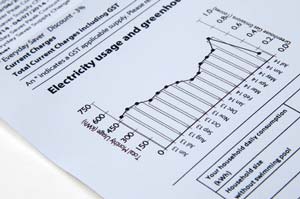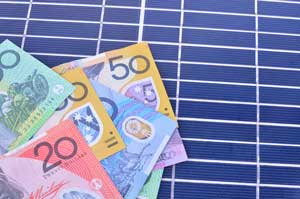Comparing Electricity

Energy Saving Guide

The essential guide to comparing electricity
The right electricity plan can save you hundreds of dollars per year. Here’s your guide to finding the best deal for your power.
We’ll break out our top ten tips for comparing electricity, along with the pitfalls to avoid. How do we know? WATTever provides pricing data and analytics to the energy industry. We believe every Australian deserves to be better informed about energy. So, we’re sharing our comprehensive price information and insider knowledge to help fellow households and businesses comparing electricity find the best deal. As a result, we’ve become Australia’s largest publisher of retail energy pricing.
The choice is yours
Most Australians can now buy their electricity from a wide range of energy providers. In NSW, Victoria, South Australia, South East Queensland and the ACT, there is healthy competition in the power market. In many locations, there is a choice of up to two dozen retailers and more than seventy electricity plans. For the average household, the difference between the cheapest and most expensive plan can be significant. Yet, the electricity provided is identical.
How much can I save?
In 2022, the Australian Energy Market Commission (AEMC) calculated the savings available to average households by switching from the Default Market Offer (DMO or VDO in Victoria) to the cheapest available market deal. The AEMC found that average households using electricity would save up to $404 in NSW and $120 in Queensland. In Victoria, homes could save up to $193, $122 in South Australia and switchers in the ACT would save an enormous $345. But you could save a lot more! In September 2022, the Regulator found the difference between the highest and lowest cost market offer in NSW is up to $1,300, $1,211 in Queensland and $948 in Victoria. That difference between cheapest and most expensive market plan is $922 in SA and $1176 in the ACT. Don’t get stuck on a dud plan – compare and check you are on competitive deal!
It’s still worth shopping around in 2024
Being on a competitive market offer will save you money. Australia’s consumer watchdog, the ACCC reviewed the electricity plans of 5 million households in August 2023. They found that consumers who don’t regularly shop around for a competitive deal experience higher prices. Almost half were paying the Default Offer price or more, and 79% were paying more than the median price offered to new customers . They raised a concern that the market isn’t delivering for customers who don’t regularly switch or engage with their existing retailer. Why wouldn’t you want to pay less for your energy? By spending a couple on minutes each year properly comparing electricity offers available for your home, you can ensure you’re not overpaying.
Default Offer 101
The Default offer is the regulated benchmark or reference price that electricity retailers can charge customers, since July 2019. It was created to reduce excessive power bills incurred by vulnerable and disengaged households. Households on standing offers that haven’t actively shopped for an electricity plan have been moved to Default Offers. While it’s certainly a lot better, it’s not great. That’s because homes on the Default Offer are still paying a higher cost than their savvy neighbours for the same electricity. They could do better by shopping for a cheaper market deal.
Which plan is best for me?
There is no one-size-fits-all best electricity plan. That’s because pricing differs by region. Some plans are designed to appeal to specific audiences like solar owners, high-energy users or seniors. Special deals and offers come and go. By keeping the following tips in mind you’ll be on track to finding the best deal for your unique situation. Our comprehensive comparison gives you the power to compare thoroughly and rank plans based on your own usage and preferences.
The ten things that matter when comparing electricity
If you are looking to cut your power bills, here’s what to look at when comparing electricity;
- Compare the WHOLE market
- Know how much electricity you use
- Ignore the discount and focus on the lowest cost.
- Check the benefit period and discount conditions
- Understand the pay on-time conditions
- Know the fine print on limits
- Have an exit strategy
- Make sure your solar is valued
- Ensure your concessions count
- Explore Green options
1. Compare the WHOLE market
If you want the best deal, why would you only compare a handful of retailers or plans? There are up to 25 retailers in many networks actively competing to supply your energy, with 80 or more publicly listed plans to choose from. It sounds daunting but the good news is that it’s now easy to compare thoroughly and see a clear ranking of your options. If you are looking to find the cheapest deals you should be using a service that compares the WHOLE market, like WATTever. Be mindful that large comparison services ‘only show what they sell’ and many competitive retailers can’t afford their high referral fees. Users of these services won’t discover the cheapest deals available because retailers can’t afford to offer their very lowest price AND pay hundreds of dollars in commission on the same plan.

2. Know how much electricity you use
It’s valuable to understand how much energy you use (measured in kWh) and when you use it. Entering your unique electricity usage profile for a recent bill helps provide the most accurate result from a comparison. That’s because plans have different cost structures. Some work better for low or high energy users. Others are good for big solar exporters but expensive for solar owners without much excess solar energy.
All the information you need to compare accurately can be found on a current electricity bill. Your bill includes details of your tariff type (anytime or time of use, and for some a demand tariff) and, the quantity of electricity used over time (kWh). Plus you’ll see other factors that may impact your bill such as controlled loads, solar export and concessions. Unless this information is valued in the comparison, the results are likely to be less than ideal. You might even find that switching tariff type could offer an extra saving.

3. Ignore the discount and focus on the lowest cost
The new electricity regulations may have stopped the ‘made up’ discount game. But it’s still best to ignore the distracting discount and look only at the total price when comparing plans. After all, you want the cheapest plan for your situation, not bragging rights about a discount rate for a hypothetical average home. That’s why WATTever’s comparison is ranked strictly by the final cost and never by the discount.
Retailers must use the price of the Default Offer as the reference price when calculating the discount on a market offer. The Victoria Default Offer has a set usage rate and daily supply charge, which is straightforward. However, in the other States, the rules around the Default Offer are more complicated. Retailers are allowed to use any combination of usage and daily supply charges. To comply with the DMO rules the total cost for an average home’s electricity usage in each electricity network (3,900 to 4,900 kWh p.a.) must meet the annual amount set out in the regulation. The result is the cost of Default Offers outside Victoria are not uniform across retailers for low and high energy users. So be wary that the stated discount only reflects the hypothetical average home and not necessarily your situation.

4. Check the benefit period and discount conditions
Plans that appear at the top of a comparison ranking can include discounts that are short term. At the end of the benefit period, which is usually 12 months, the retailer can remove or reduce the discount on the plan. So that awesome deal could soon fall short. Just before the benefit period expires, you’ll need to contact the retailer to ask them to reinstate your offer. Importantly, you’ll want to have researched the market to know that their response is still competitive. If you don’t, you could be paying a lot more.
Victorians get the hint
The good news in Victoria is that electricity retailers must tell their customers at least every three months if they have a better offer available. It’s one more reason to check your power bill regularly. Still, it’s effectively like comparing one retailer’s offers so not something you would want to rely on if you’re looking for the most competitive offers in the market.

5. Understand the pay on-time conditions
The huge pay-on-time discounts of the past have now been wound back. However, you’ll still find some plans that require you to pay on time to get a lower price. So, it’s worth thinking about whether you can make the payment conditions for on-time discounts. Because you could end up paying more than you’d been figuring, just by missing a payment due date. There’s plenty of good plans in the market that won’t take away your discounts if you’re ever a day late. WATTever’s comparison allows you to filter out plan that remove discounts for late payment.

6. Make sure your solar is valued
You need to include the value of your solar generation in the comparison calculation. Otherwise, you won’t be able to determine which plan is best for you. Few comparison sites value solar. And the retailers know this. So they engage in pricing tactics to get attention, including generous feed-in tariffs with added limitations. After 10kW of export each day, then the FIT might drop to a couple of cents. Or they inflate the usage and supply rates just because it’s a ‘solar plan’. We explain in our blog post, “Is the biggest feed-in tariff the best? “, the risks of being blinded by the brightest feed-in tariff.
Just one thing matters when comparing solar plans. That’s the final cost after adding up daily supply charges, usage costs and subtracting any solar feed-in tariff you’ll earn on your solar export. To go deeper, see our how to find the best electricity deal for solar guide.
Don’t have solar and are curious to see how it might impact your energy costs? When you complete a comparison at WATTever, move the Add Solar slider to see your estimated savings calculated if you add solar PV panels.

7. Know the fine print on limits

8. Have an exit strategy
It’s less common, but some plans still come with a fee for leaving. You’ll want to know this upfront! Check the Price Fact Sheet for details. If your current plan comes with an exit fee, then you’ll want to factor this in when deciding if it’s worth switching for a small saving. As a handy guide, you can use WATTever’s Fees & Charges comparison page.

9. Ensure your concessions count

10. You can find value AND good values
Kermit was wrong. It’s easy be green and review your options if that’s important to you. To help you find good value deals from companies with values you support, WATTever’s comparison includes the Green Electricity Guide star ratings. This is an independent ranking of Australia’s electricity retailers put together by The Total Environment Centre and Greenpeace. You can see the score for each retailer by hovering over the information icon for each plan. Plus WATTever’s comparison also allows you to Select Green Power, to show the deals that offer this.

You’re ready to save
Knowing what to watch out for when comparing electricity plans will ensure there are no nasty surprises in your new bill. The best plan for you is the cheapest deal you can meet all the conditions for, and keep on top of any changes in the benefit period. Often the top-ranked deals won’t be cheap for too long. You’ll need to actively contact the retailer after the discount period expires to stay on a competitive plan. If you know you won’t be reviewing the market frequently, a better option is to choose retailers who offer plans with ongoing benefit periods. These can provide you with better savings over the long term if you’re not a committed deal chaser.
What’s next?
It’s great to save a couple of hundred dollars or more by finding a better electricity deal. You might like to consider further opportunities to make more significant savings – which can add up to thousands a year. WATTever’s free Energy Saving Guides contain practical advice and ideas to help you cut energy costs.
WATTever’s Energy Saving Guides cover;
Appliances
Lighting
Heating & Cooling
Hot Water
Buying Solar
Owning Solar
Buying Battery
Owning Battery
Whether you update your lighting to LED’s, add some solar, monitor your energy use, get a heat pump for your hot water or go all the way to owning an EV there are lots of things you can do. WATTever is all about sharing how to be more energy-efficient without cramping your lifestyle. It’s good for the planet. And equally good for your wallet. So come with us on the journey to save energy.










